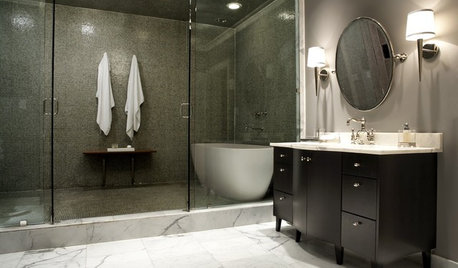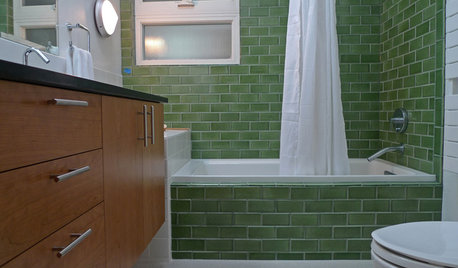Would this work for a 'steam cure'
Fleur
18 years ago
Related Stories

BATHROOM DESIGNHow to Choose Tile for a Steam Shower
In steamy quarters, tile needs to stand up to all that water and vapor in style. Here's how to get it right the first time
Full Story
REMODELING GUIDESWhat to Consider Before Starting Construction
Reduce building hassles by learning how to vet general contractors and compare bids
Full Story
BATHROOM DESIGN6 Elements of a Perfect Bathroom Paint Job
High-quality paint alone won't cut it. For the best-looking painted bathroom walls, you'll need to get these other details right
Full Story
DECORATING GUIDESHow to Bring the Beauty of Reclaimed Wood to the Bath
Beautiful salvaged wood adds warmth and texture to a bathroom. Here's how to get the look right
Full Story
HOUSEKEEPINGThe Quick and Easy Way to Clean a Microwave
All you need is water and a couple of other natural ingredients to get your appliance sparkling and smelling fresh again
Full Story
HOUSEKEEPINGHow to Clean Hardwood Floors
Gleaming wood floors are a thing of beauty. Find out how to keep them that way
Full Story
BATHROOM DESIGNBathroom Surfaces: Ceramic Tile Pros and Cons
Learn the facts on this popular material for bathroom walls and floors, including costs and maintenance needs, before you commit
Full Story
FLOORSWhat to Ask When Considering Heated Floors
These questions can help you decide if radiant floor heating is right for you — and what your options are
Full Story
KITCHEN CABINETSKitchen Cabinet Color: Should You Paint or Stain?
Learn about durability, looks, cost and more for wooden cabinet finishes to make the right choice for your kitchen
Full Story
FLOORS5 Benefits to Concrete Floors for Everyday Living
Get low-maintenance home flooring that creates high impact and works with home styles from traditional to modern
Full Story





tango88
FleurOriginal Author
Related Professionals
Maple Valley Landscape Architects & Landscape Designers · Arlington Landscape Architects & Landscape Designers · Barrington Hills Landscape Architects & Landscape Designers · Port Royal Landscape Architects & Landscape Designers · Buford Landscape Contractors · Battle Ground Landscape Contractors · Cudahy Landscape Contractors · Emmaus Landscape Contractors · Lees Summit Landscape Contractors · Los Banos Landscape Contractors · Lynchburg Landscape Contractors · Madera Landscape Contractors · Parker Landscape Contractors · Seminole Landscape Contractors · Silver Firs Landscape Contractorstango88
tufaenough
FleurOriginal Author
Belgianpup
tufaenough
tufaenough
tango88